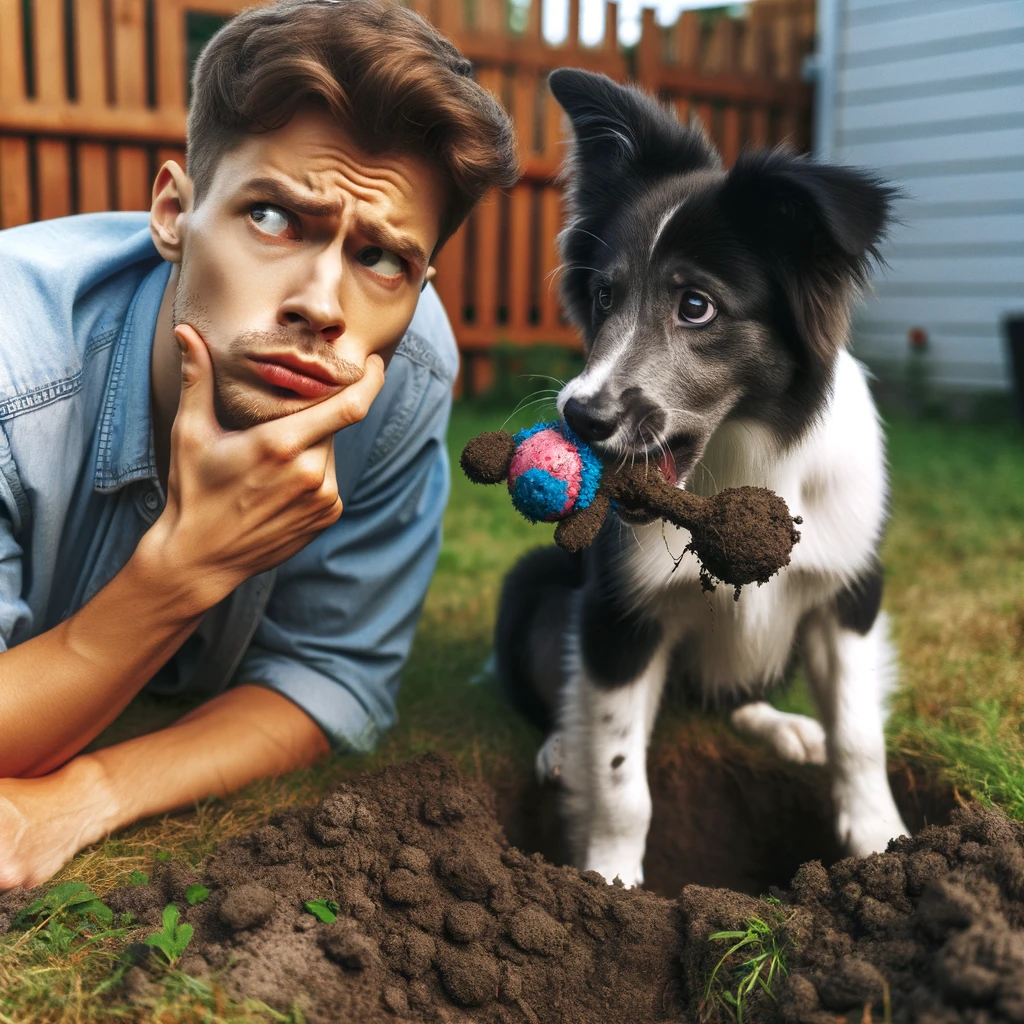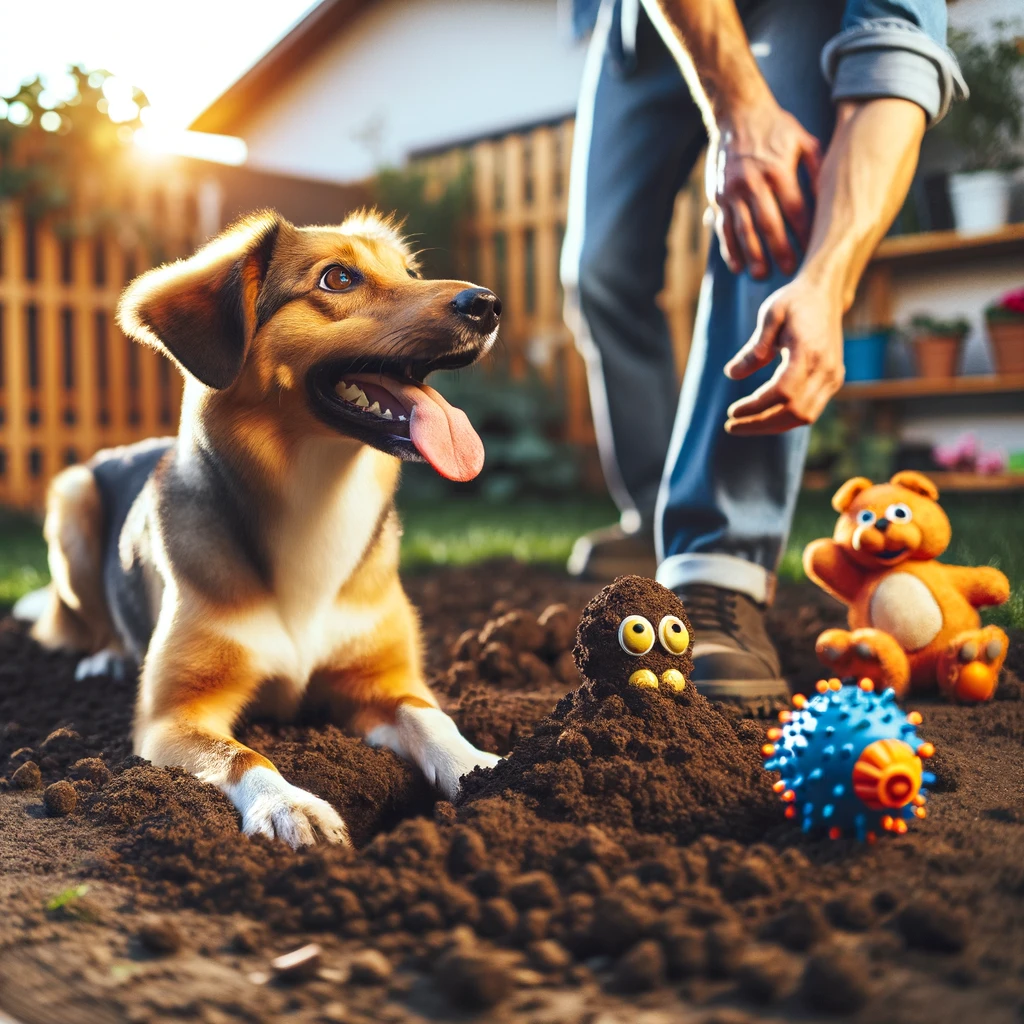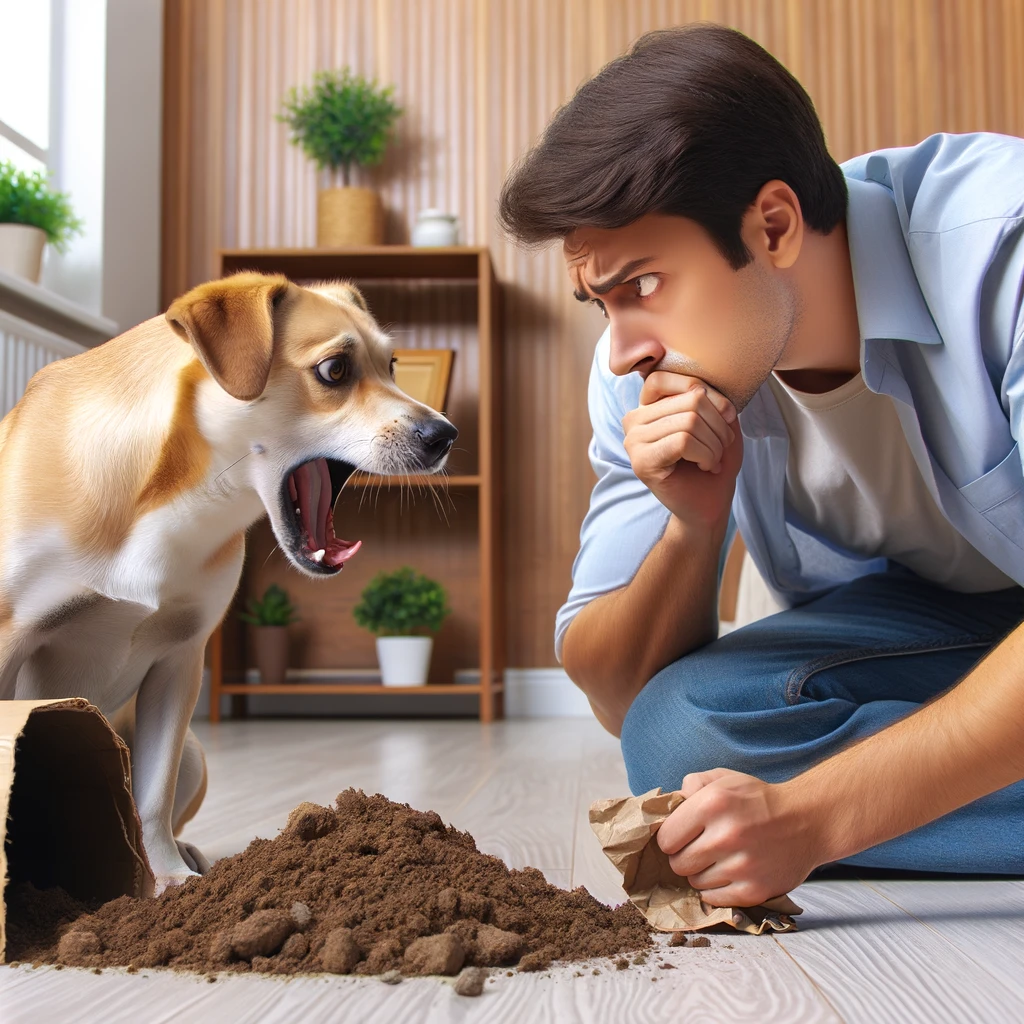Why is my dog whining and bury his stuff ?

Why is my dog whining and bury his stuff ? If you’ve ever found yourself puzzled by your furry friend’s behavior, particularly their habit of whining and burying their belongings, you’re not alone. This behavior, which can seem odd to us humans, is actually deeply rooted in their instincts and emotions.
Why is my dog whining and bury his stuff ?

1. Instinctual Drives: A Peek into History
Dogs, descendants of wolves, have inherited many instincts from their ancestors. One such instinct is burying food and valued items for safekeeping. In the wild, this behavior would protect their resources from scavengers, ensuring survival. Your domesticated dog might not face these wild challenges, but the instinct persists.
2. Whining: More Than Just Noise
Whining is a form of communication. Dogs might whine when they’re anxious, excited, seeking attention, or even when they’re not feeling well. When combined with burying behavior, it could indicate a mixture of excitement about their ‘treasure’ and anxiety about keeping it safe.
3. The Security Blanket Effect

Sometimes, the items your dog chooses to bury can be seen as their security blankets. These could be toys, bones, or even your personal belongings. Burying them could be their way of keeping their ‘comfort items’ safe.
4. Attention-Seeking Behavior
Consider the possibility that your dog has learned that whining and burying stuff gets your attention. Dogs are social animals and may engage in certain behaviors simply because it leads to interaction with you.
5. Potential Health Concerns

If this behavior is accompanied by excessive whining or seems out of character, it’s worth consulting a veterinarian. There could be underlying health issues, especially if the behavior is new or has suddenly intensified.
6. How to Respond
- Observe and Understand: Pay attention to when and why your dog exhibits this behavior. Understanding the context can help you respond appropriately.
- Provide Security: Ensure your dog feels secure. Sometimes, extra cuddles or a safe space can reduce these behaviors.
- Mental and Physical Stimulation: Engage your dog in activities that stimulate their mind and body. Often, boredom can lead to such behaviors.
- Positive Reinforcement: Encourage good behavior with positive reinforcement. If they whine less or engage in desired behaviors, reward them.
- Seek Professional Help: If you’re concerned or the behavior seems problematic, don’t hesitate to consult a professional dog trainer or a veterinarian.
Final Thoughts
Remember, every dog has its unique personality and reasons for their behavior. Patience, observation, and understanding are key. By addressing both their physical and emotional needs, you can help ensure your furry friend is happy, healthy, and well-adjusted.



